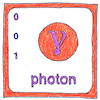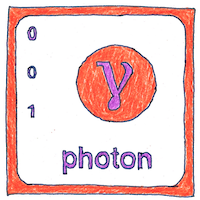Max Planck, Albert Einstein
quantum mechanics

|
Quanta
Black-body, as opposed to reflective-body, radiation taught Max Planck, against his convictions about physics, that electromagnetic energy was quantized as multiples of an elementary unit. Then it was possible for Albert Einstein, studying how light knocks electrons from metals, to realize that light is quantized, gathered into groups of photons with energy according to frequency.
Graininess
Motion picture films at thirty frames per second imitate continuity. The brain smoothes out the graininess of the eye or computer display. Who can say everything is not quantized until we pry apart time and space and see if we can count pieces?
Indivisible
The Greek word “atom” meant indivisible. Today we know that each part of an atom, its protons, neutrons, and electrons, are combinations of quarks that we think are indivisible. Jonathan Swift wrote that “a flea Has smaller fleas that on him prey” and “ad infinitum,” which means, if it were true, that the impossible end of density, and the impossible medium in which smaller and smaller parts continue to vibrate, could make it difficult to imagine the indivisible.



J. J. Tomson and others had already taught that atoms have parts. Planck and Einstein were at work to explain what those parts were and how they worked.
Planck studied how hot objects emit light; he called the packets of radiation emitted by black bodies “bundles” or “energy elements.” Einstein studied how metal surfaces that absorb light emit electrons; he calculated that photons had to be quantized. All elecromagnetic radiation is absorbed and emitted in discrete packets, that is, in quanta.
See also in The book of science:
Readings in wikipedia: